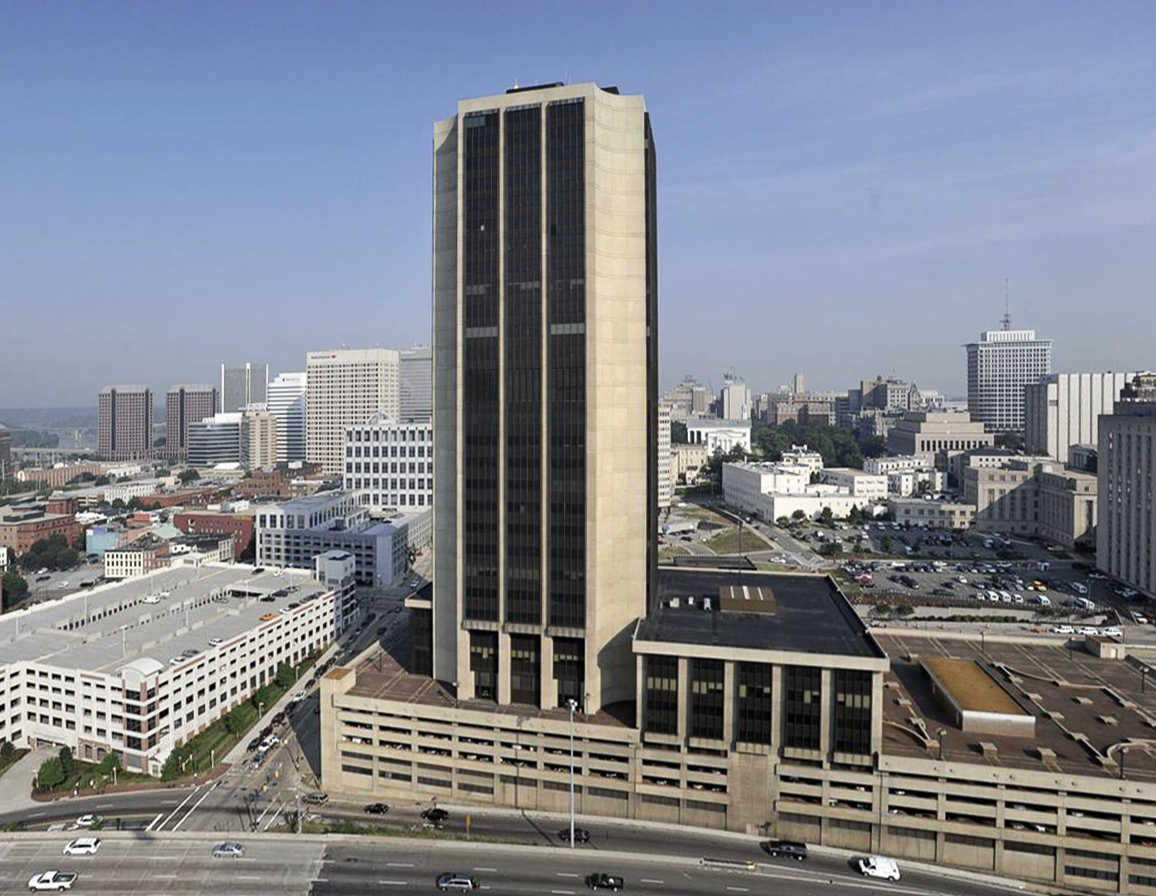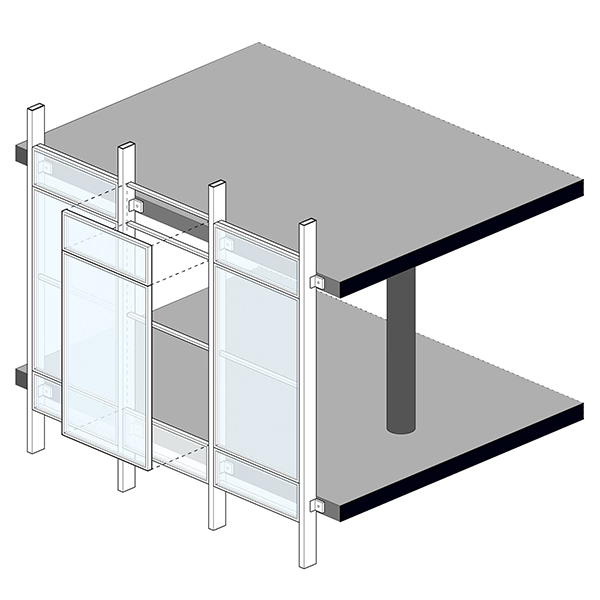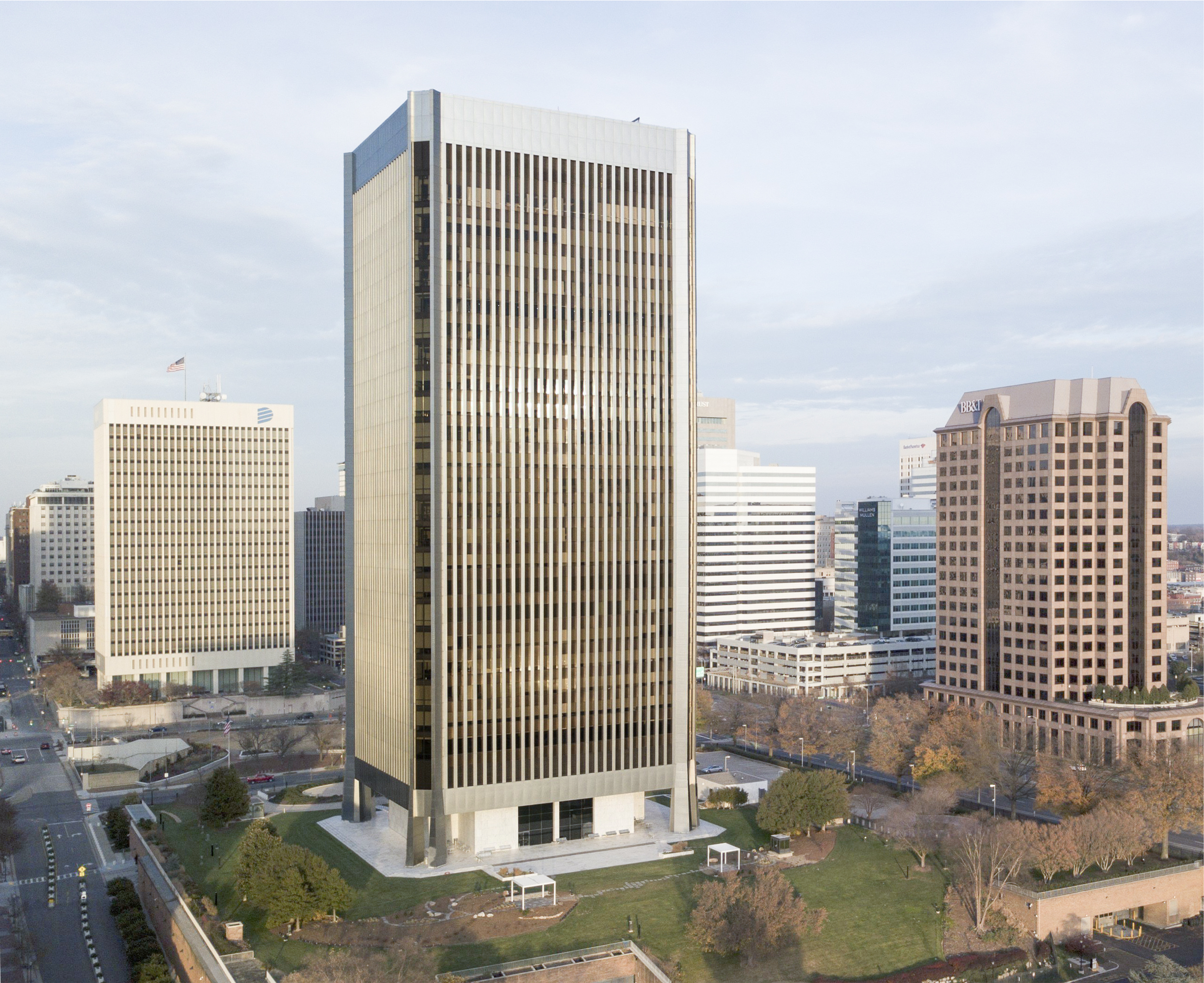The James Monroe Building is an International Style skyscraper designed in 1968 by Ballou, Justice & Upton Architects, and built in 1981 in Richmond, VA.
James Monroe Building is not the only name you might know this building by though. The building is, or has also been known as James Monroe State Office Building.
Its precise street address is 101 North 14th Street, Richmond, VA. You can also find it on the map here.
The original plans for an office complex envisioned two twin towers on the site, built atop a large 4-level base and interconnected by a lower structure between them. On the roof of the base building you can even see the marks where the pillars to support the second tower would have been, but the second tower was never built..
The architect commissioned to undertake this restoration was https://www.ir-roof.com/projects/james-monroe-commercial-re-roof/?utm_source=chatgpt.com.



